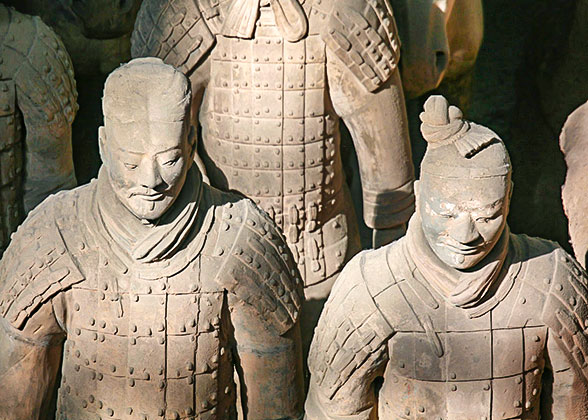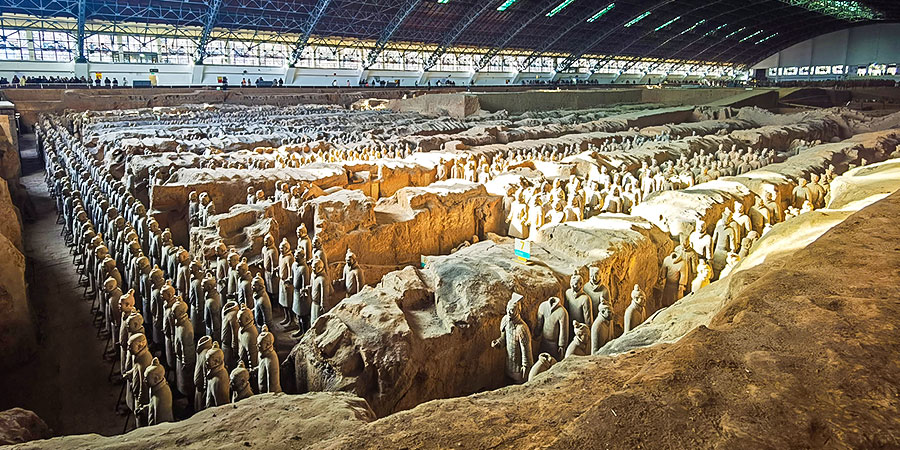Ancient Greek Art Inspired China’s Terracotta Army? Impossible!
A report about Terracotta Army once said that its unearthed musician figures, dancer figures and acrobatic figures were inspired by ancient Greek sculpture. Some people even claim that ancient Greek sculptors once taught Chinese craftsmen how to make terracotta statues during Qin Dynasty (221BC-207BC). However, it is contradictory to the common belief that the close cultural interaction between the west and the east began around 1500AD. Also, according to the Chinese archaeologists, there is no sound evidence to show that Qin craftsmen ever communicated with ancient Greek.
Why do some people think that Terracotta Army was inspired by Ancient Greek Art?
1. Compared with previous sculptures, the Terracotta Army has a strikingly different style.
 |
| Tall and Life-like Terracotta Warriors |
2. They don’t believe Qin Craftsmen mastered such delicate carving techniques.
3. The unearthed human bones had the European DNA.
For those who insist on the influence of ancient Greek art, their most strong evidence could be the European DNA extracted from the unearthed human bone in the vicinity of the Terracotta Army. This finding means that Europeans may have come to or already lived in ancient China more than 2,200 years ago. Thus, Greeks were also likely to have visited ancient China and spread their sculpture arts.
However, these three statements can’t bear close scrutiny.
Why does Terracotta Army have nothing to do with ancient Greece?
1. The change of style was to represent the authority of the first emperor in Chinese history.
2. The Terracotta Army’s scale was too large to be instructed by ancient Greeks.
 |
| Grand Terracotta Army |
3. That European was probably a worker instead of an ancient Greek sculptor.
Terracotta Army is a part of Qin Shi Huang Mausoleum. According to the historical record, more than 700,000 workers once participated in constructing this largest mausoleum in the world. So, it was not a rare thing to find several exotic people among the workforce. Moreover, many people speculate that any European remains were simply those of a worker.
Eurocentrism ignores global cultural diversity.
Besides the Terracotta Army, many other Asian cultural relics, especially statues of Buddha, were also once explained by this concept. For instance, Gandahara was a country in the north east of the Indian Peninsula in 600BC. This country was known for its delicate statues of Buddha, which feature graceful proportion and posture. Eurocentric belief is that Alexander the Great and several Greek craftsmen traveled to Gandhara in late 400BC and therefore influenced local art. And this is their only explanation of Gandhara’s marvelous craftsmanship.
Obviously, Eurocentrism underestimates other diversified cultures, and this stereotype needs to be broken.
 Further Reading:
Further Reading:
Terracotta Army Boosted the Rise of Modern Europe
Let's Smash the 5 Rumors of the Terracotta Army
Terracotta Army Boosted the Rise of Modern Europe
Let's Smash the 5 Rumors of the Terracotta Army
- Last updated on Aug. 14, 2024 by Catherine He -